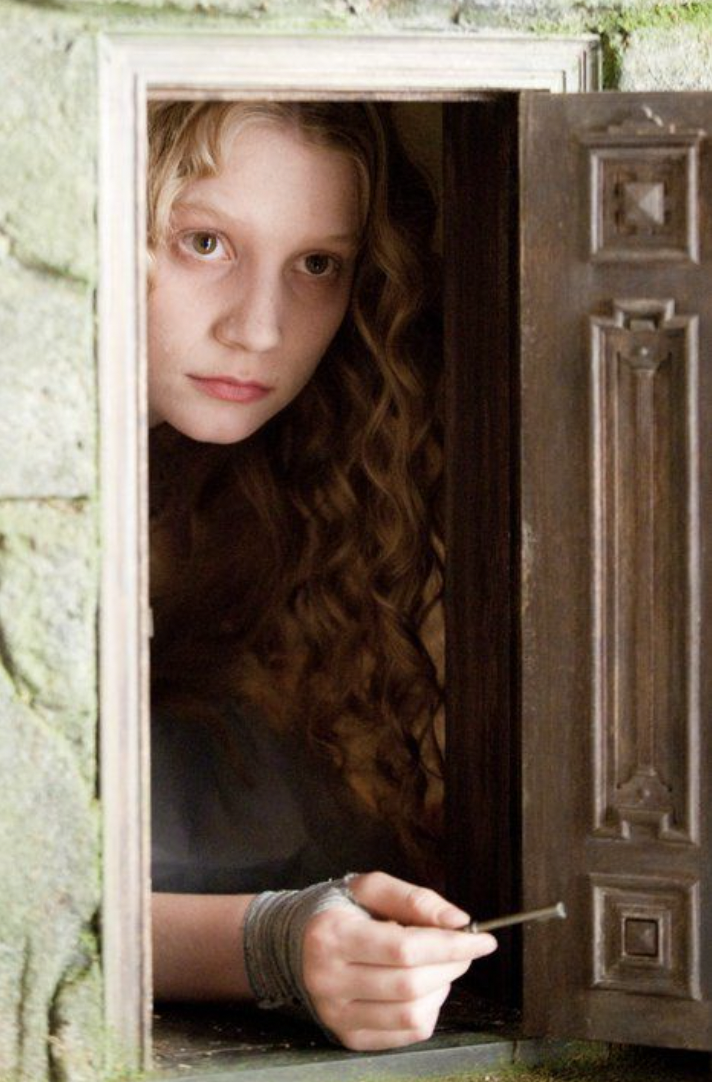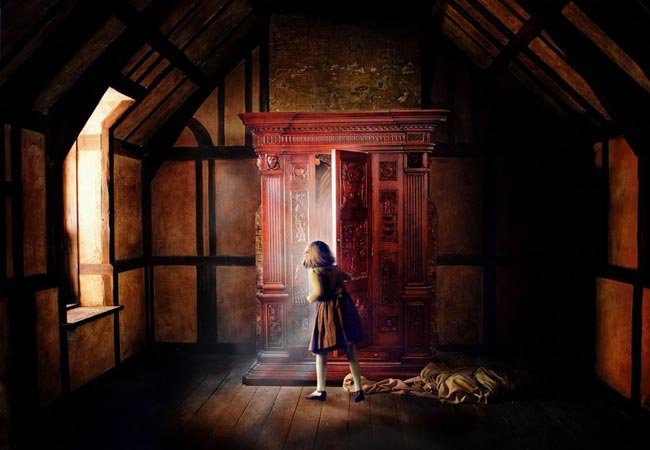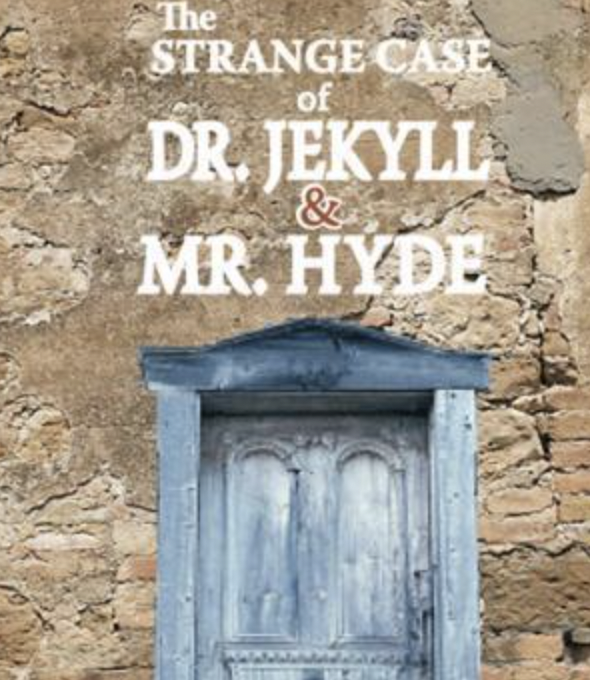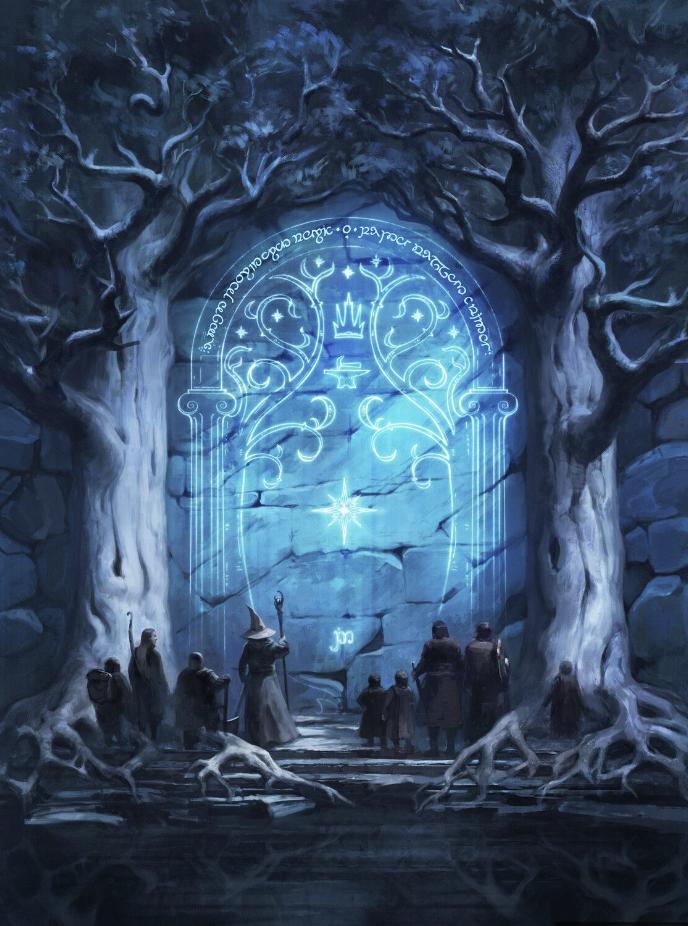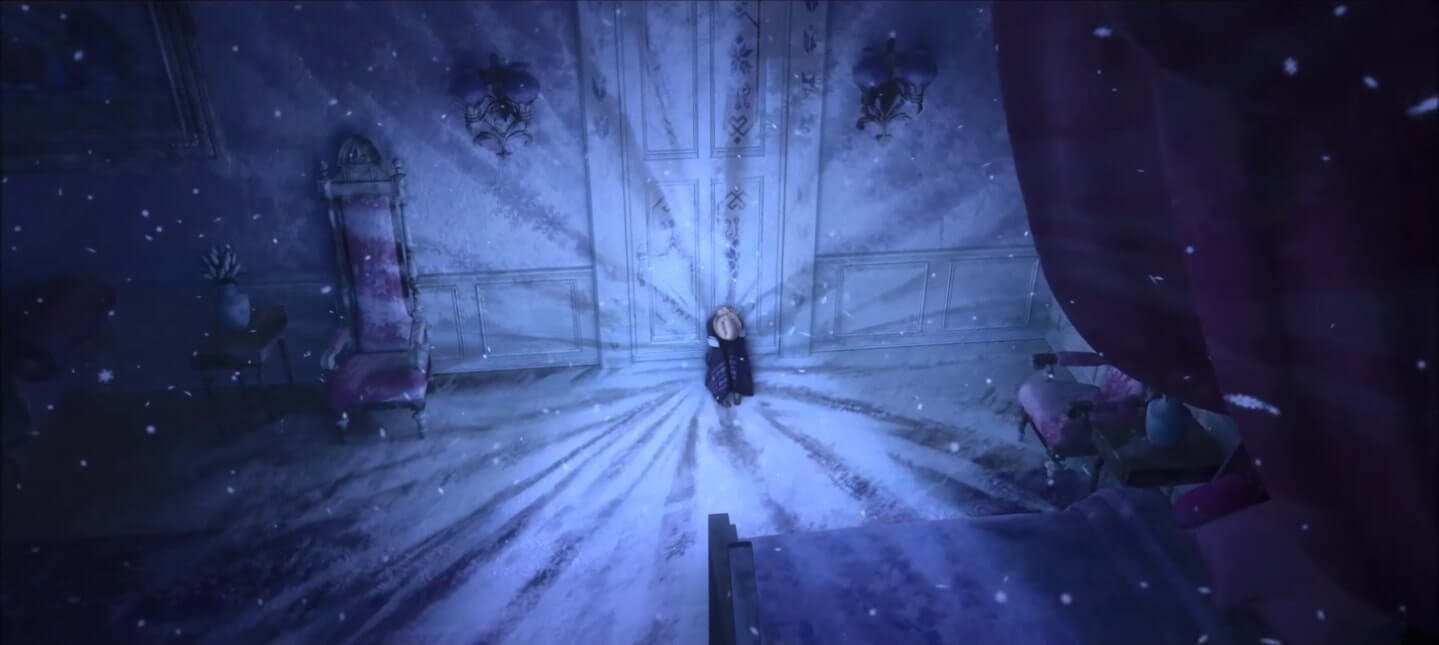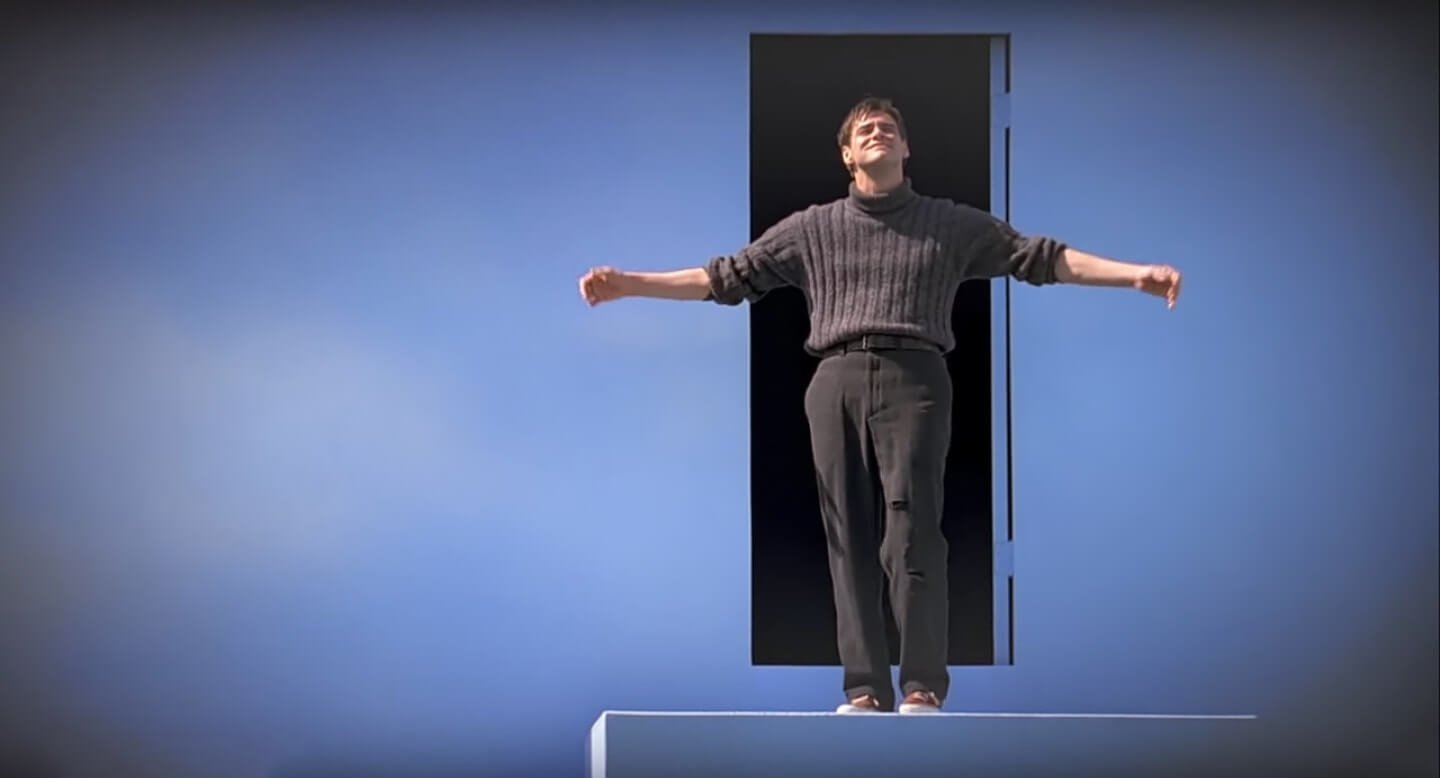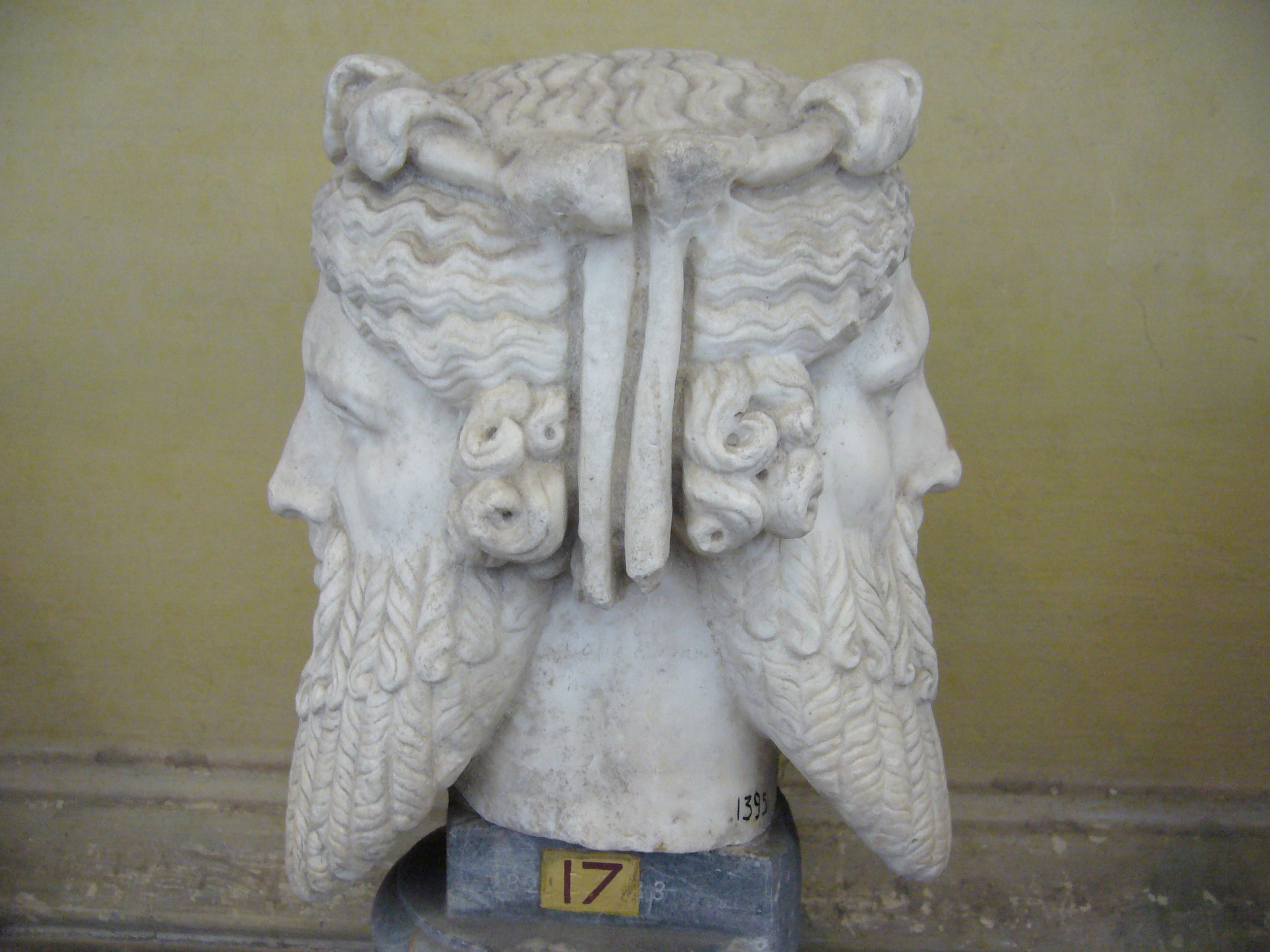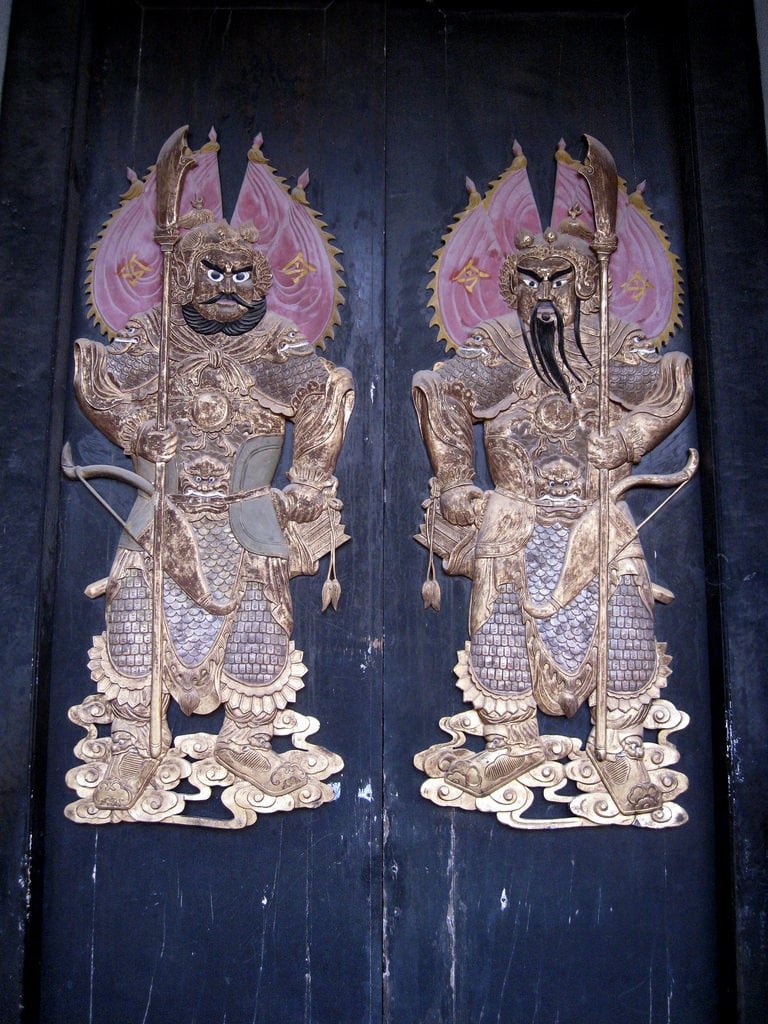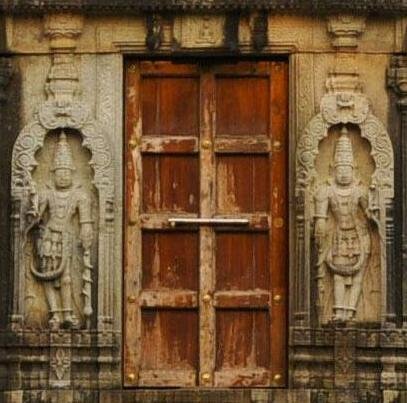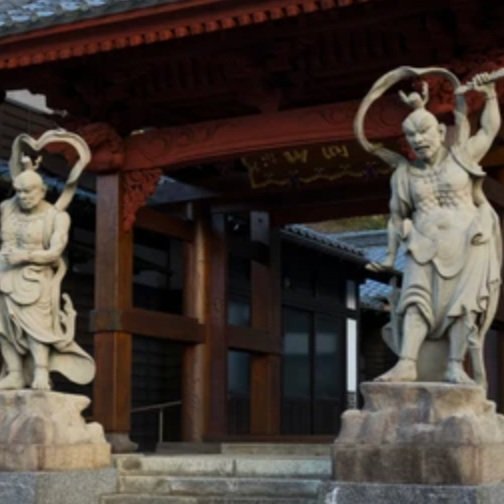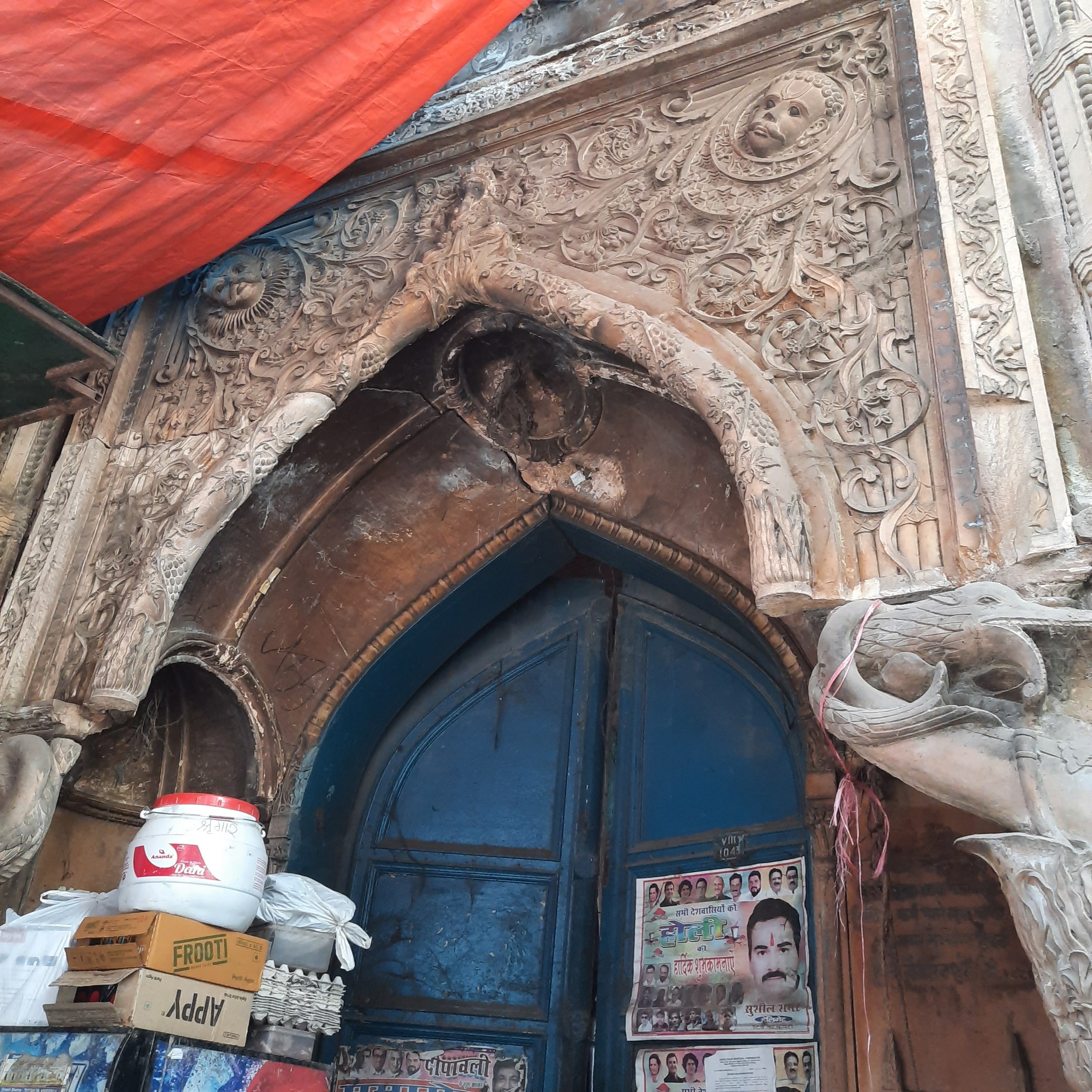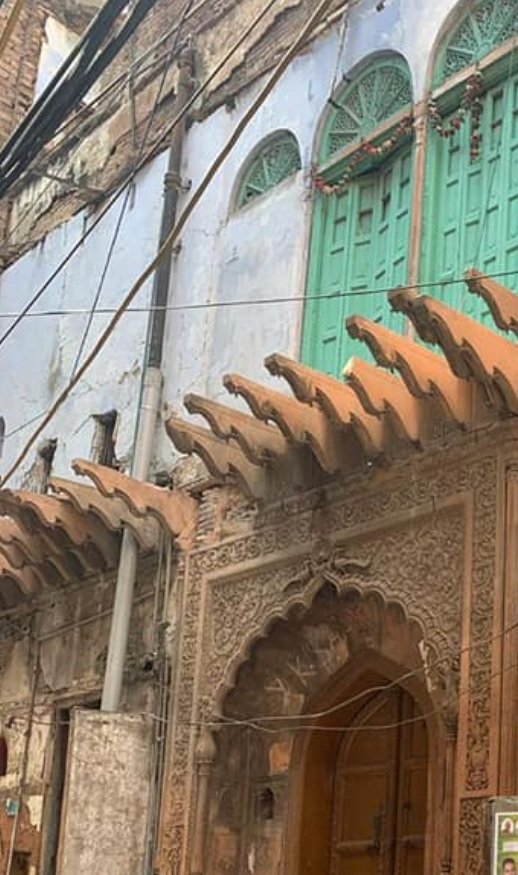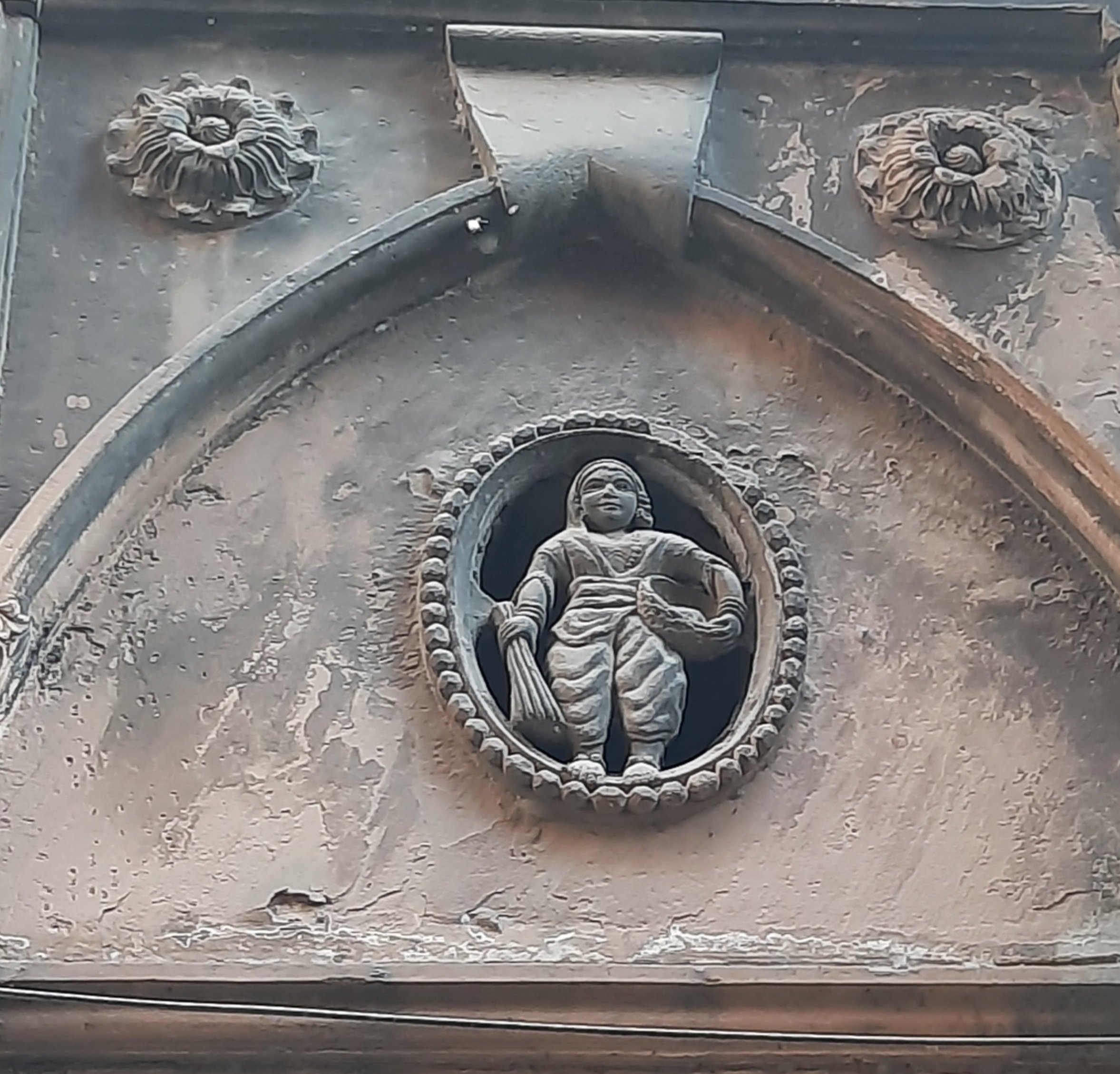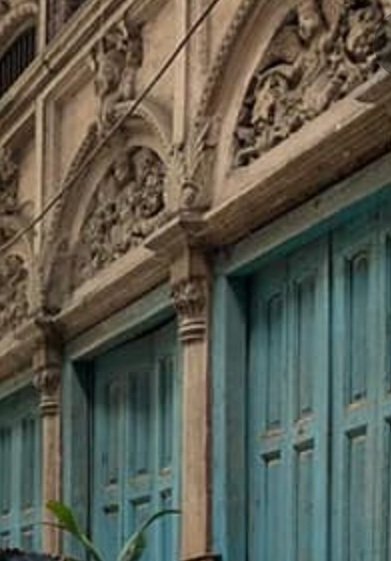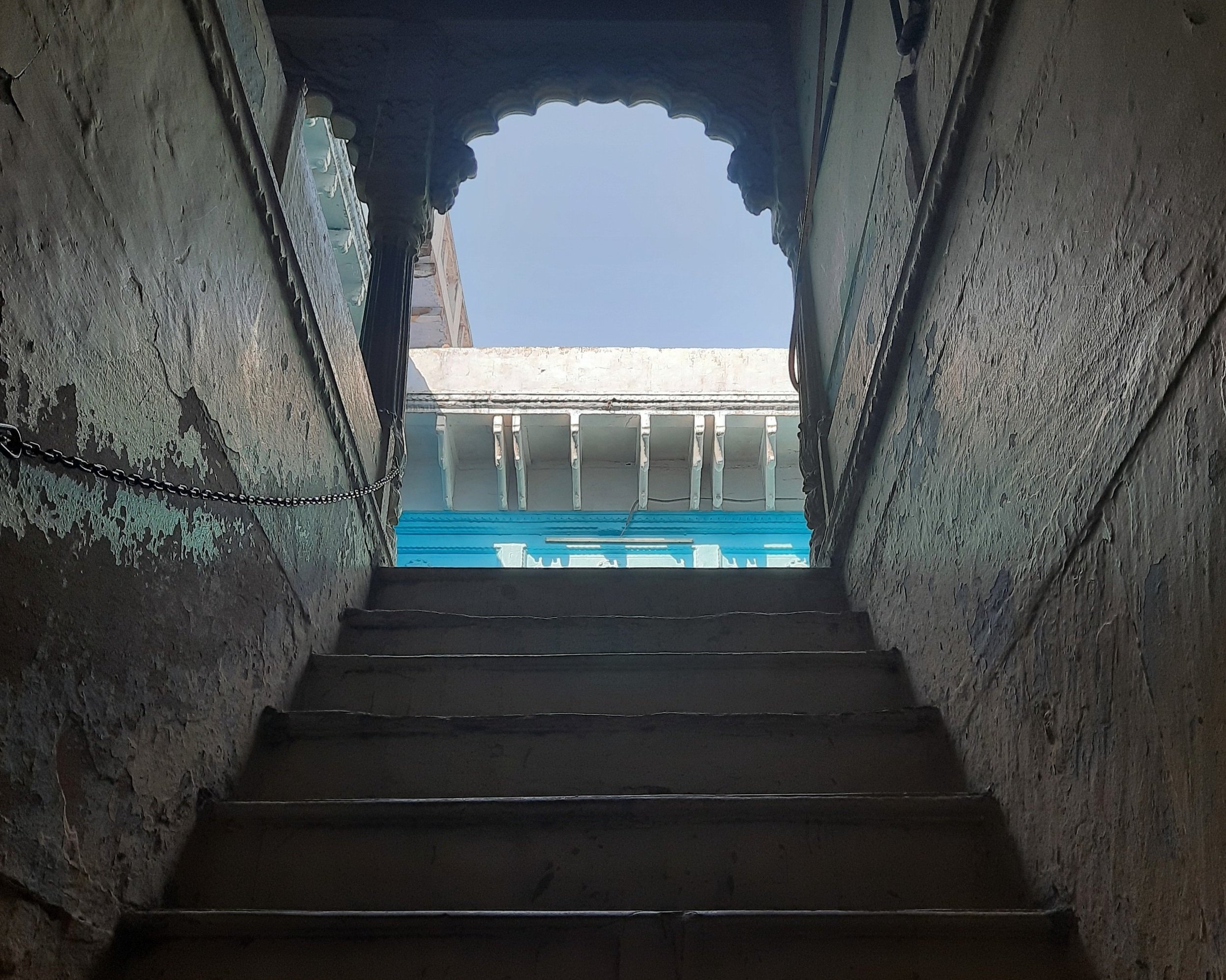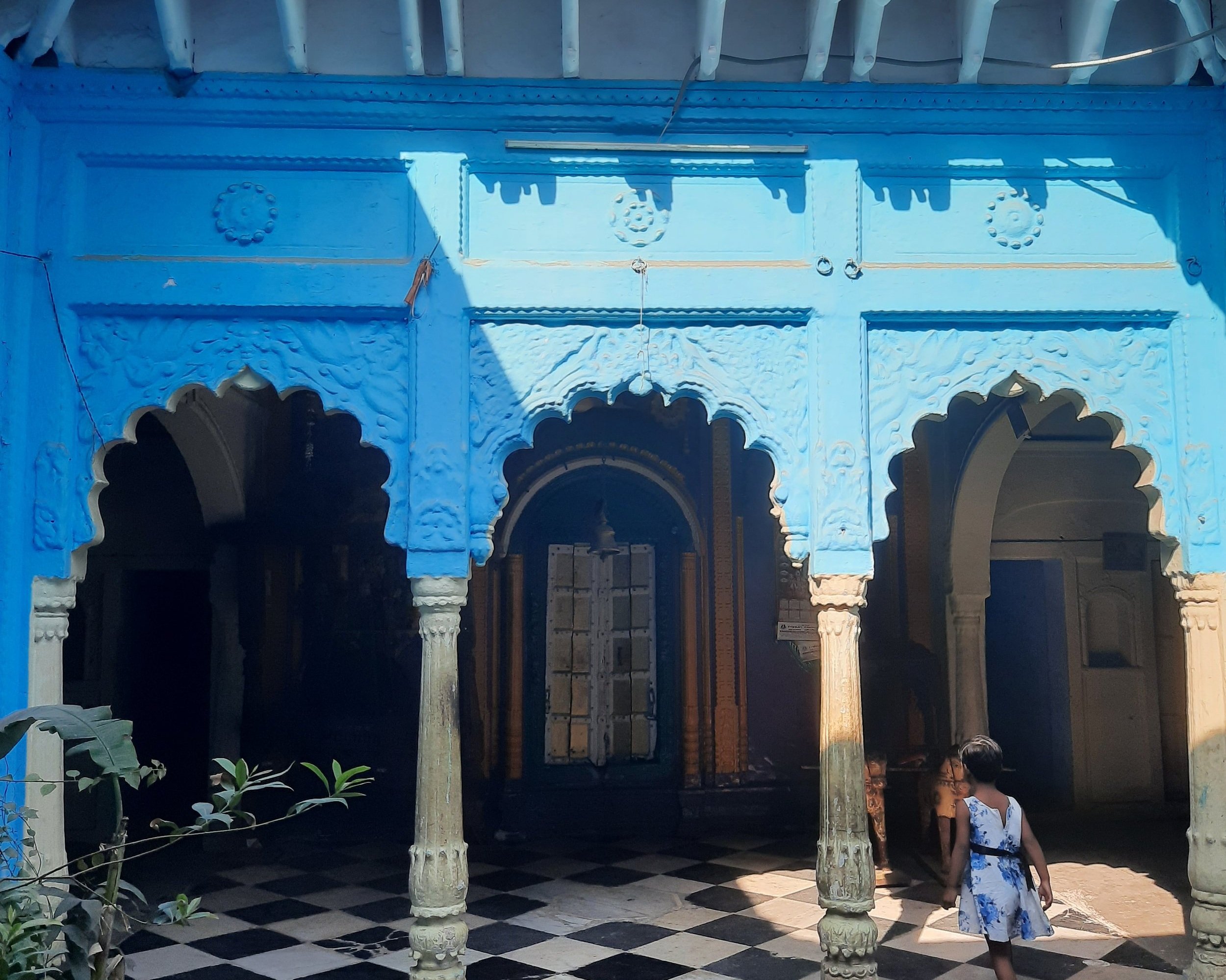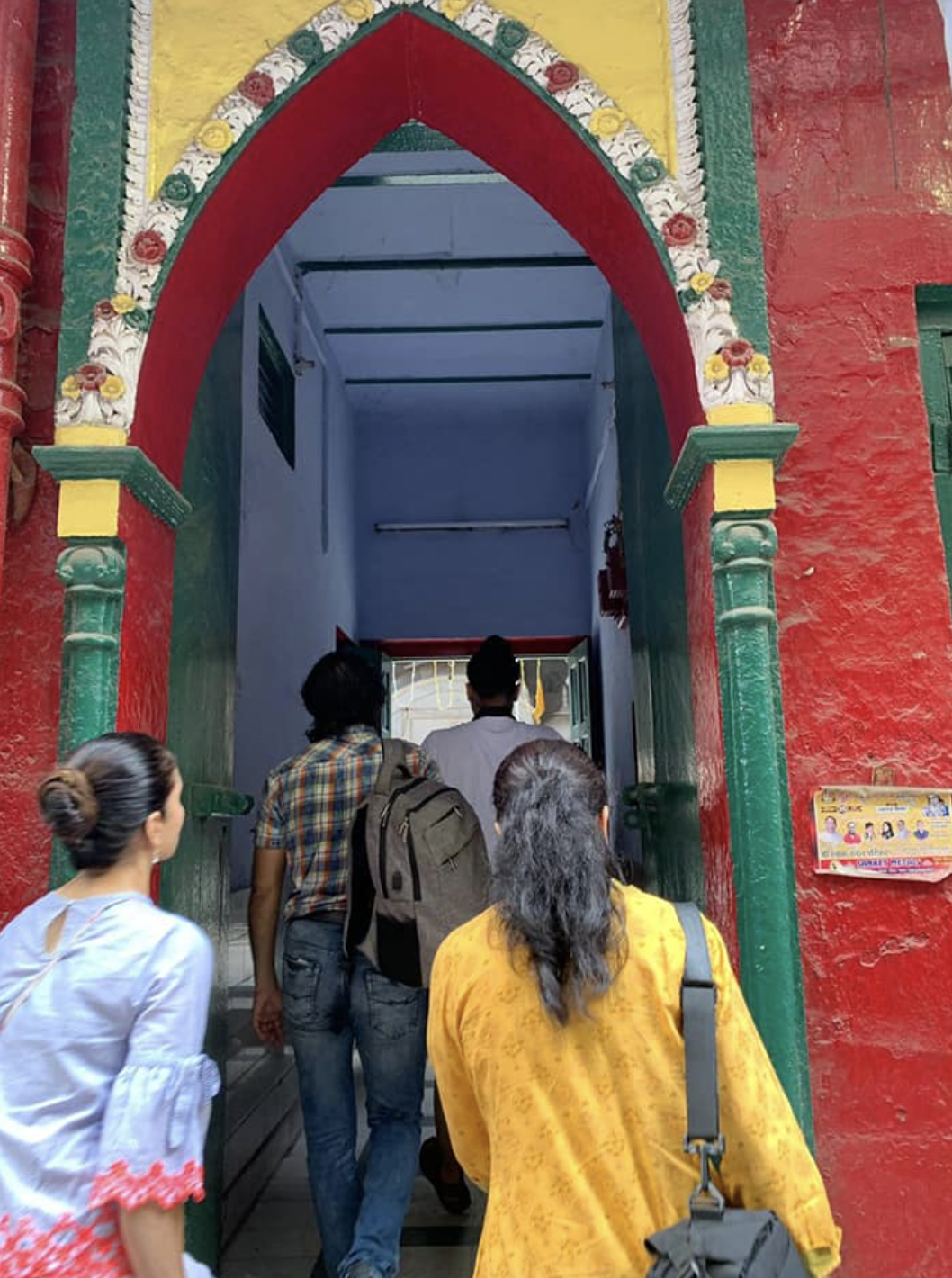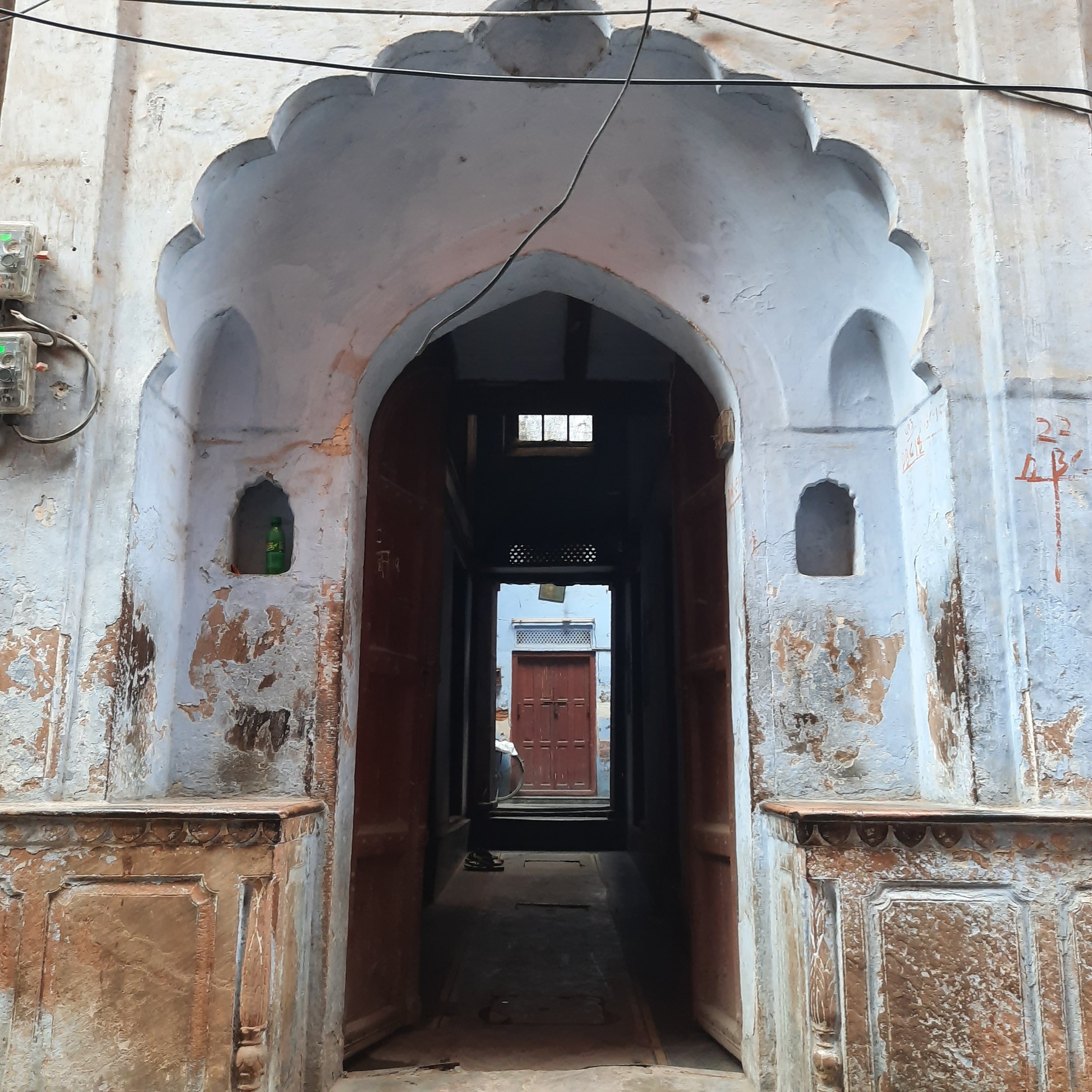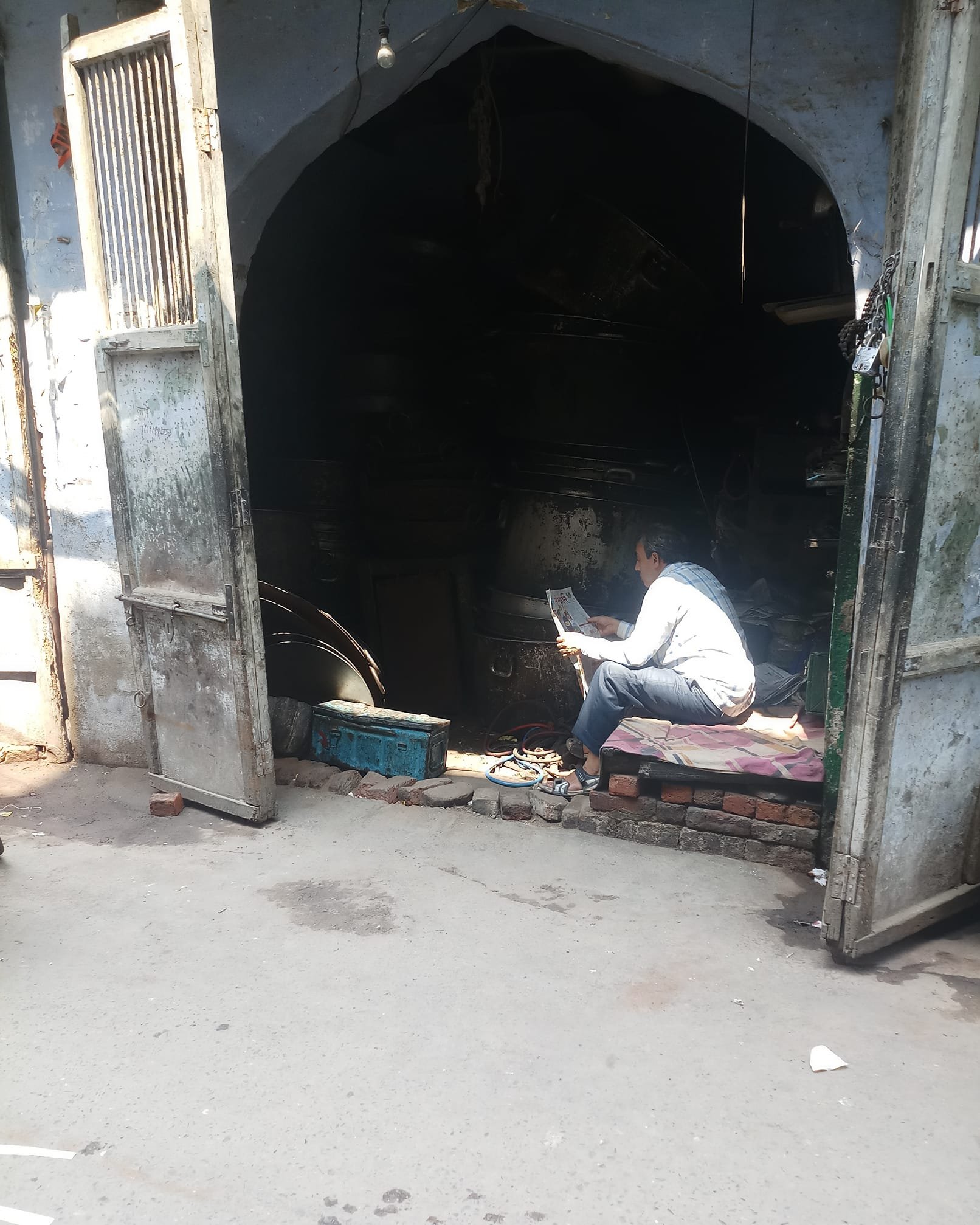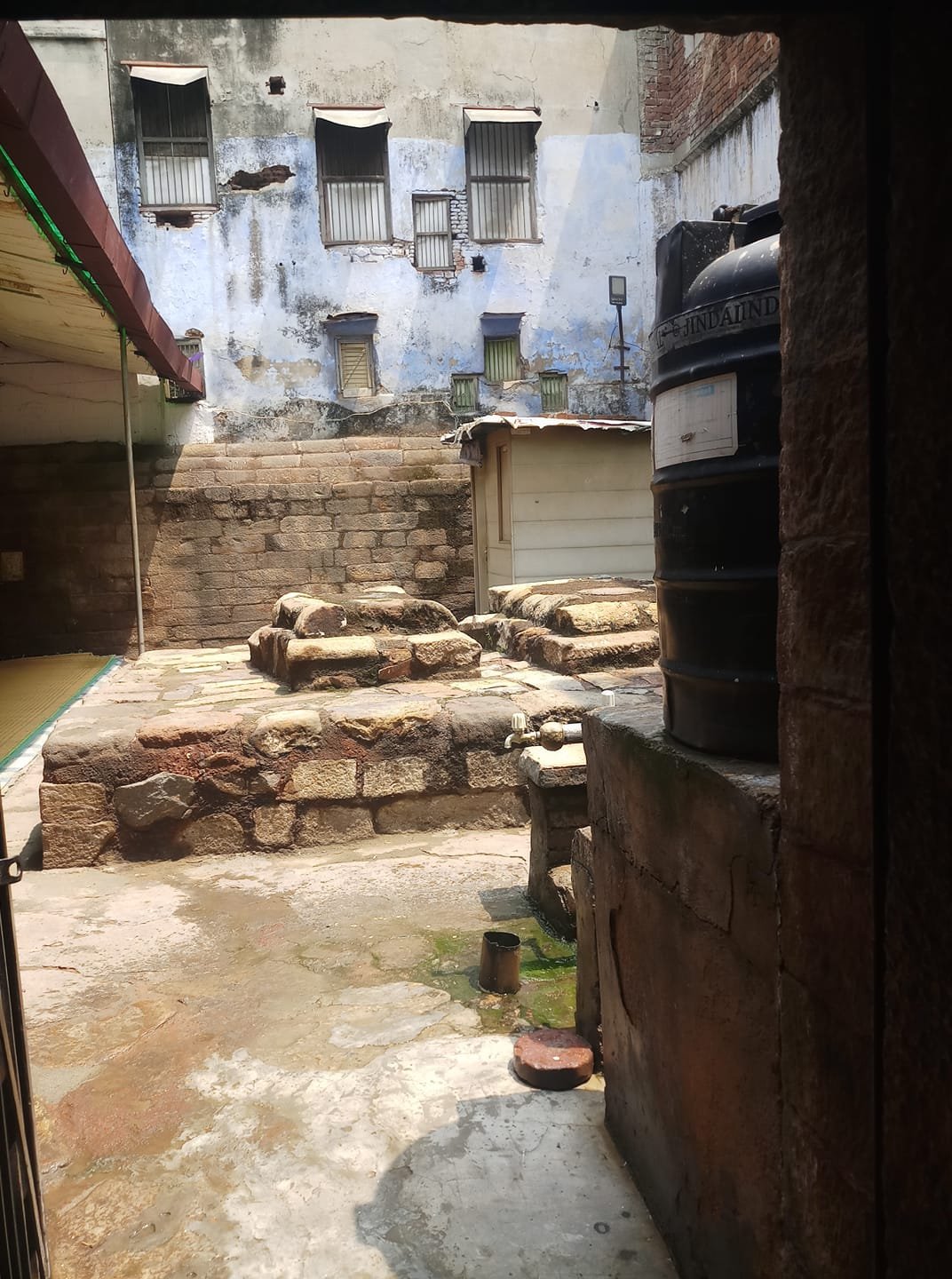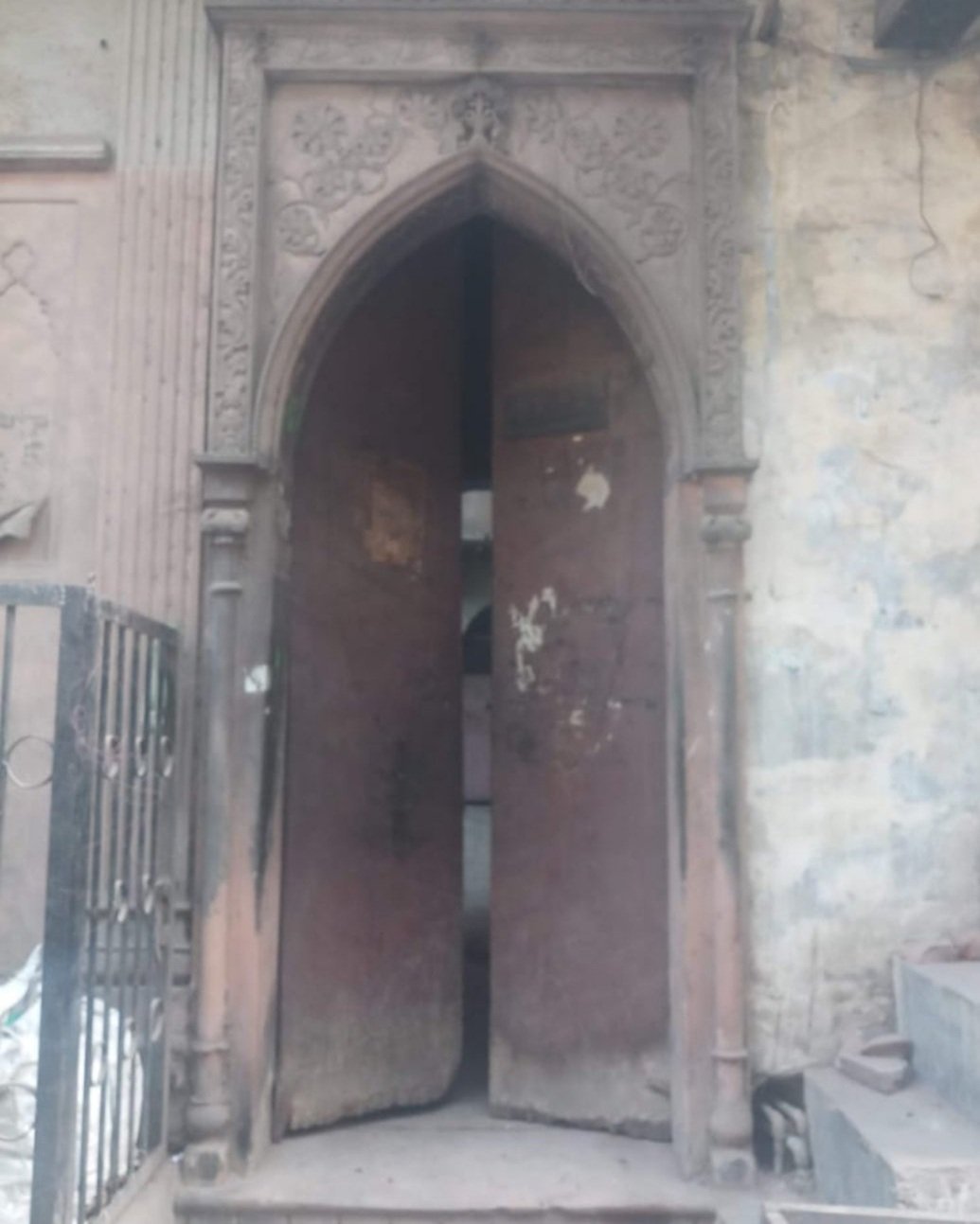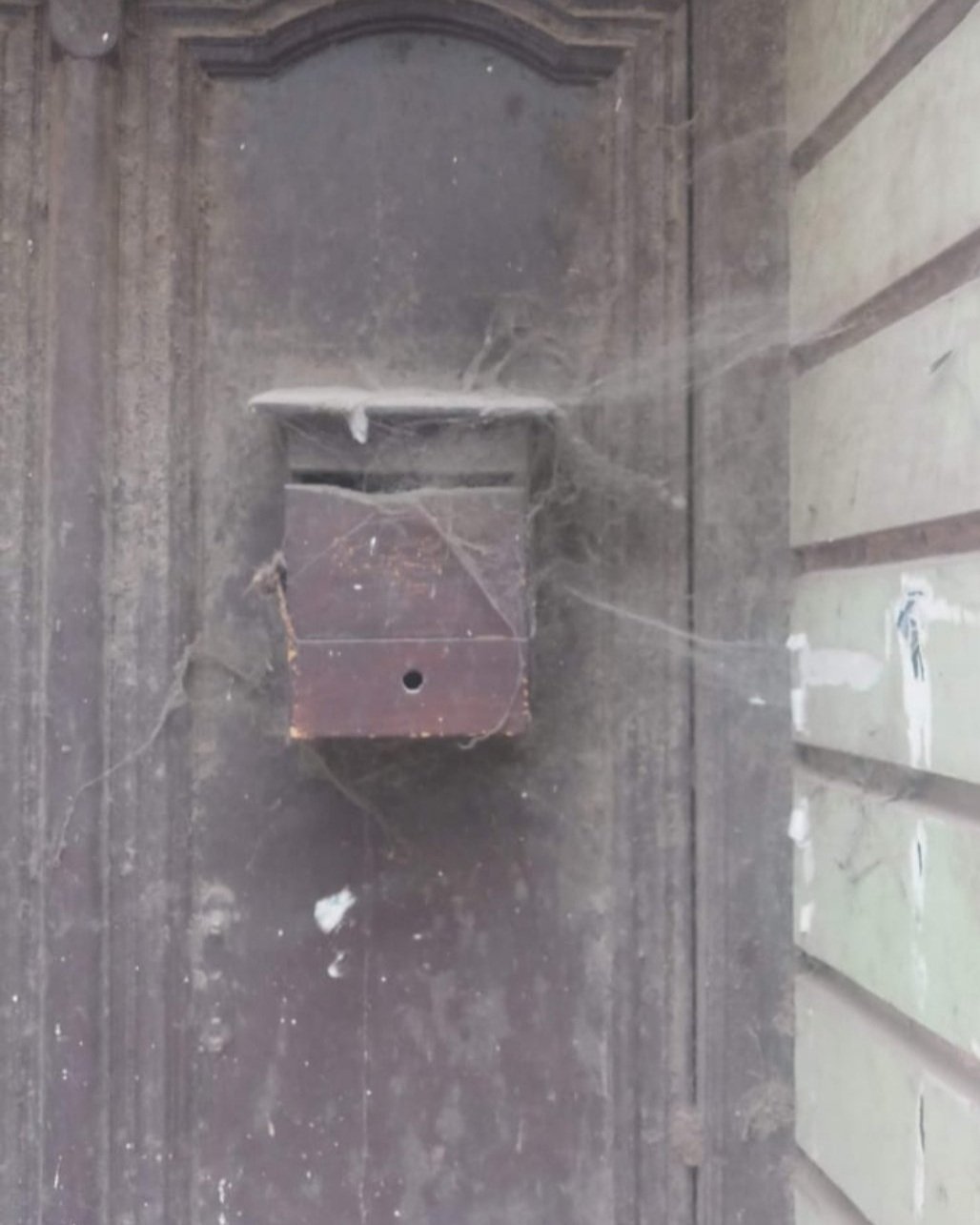OF DOORS & FLOORS - 1
There are things known and things unknown and in between are the doors - Jim Morrison
The street ecology of Old Delhi is complex. It is a world of narrow streets, irregular blocks, alleyways, pocket plazas, overhangs, balconies, arches, buildings, communities, history, vendors, animals, vehicles and more. Within this dynamic fold lie the ‘static’ doors of Old Delhi that are not only points of transition or transformation but also one of cultural distinction. We delve into both, the design and deep symbolism, using the doors of Kucha Pati Ram as reference. But first, why doors…..
MAGIC, MYTH & MOVIES
To the nomadic man doors probably provided a sense of security. The first ever known door, illusioned as a wall decoration, was considered a port to afterlife in Egyptian tomb paintings some 4000 years ago. From the olive wood doors of King Solomon to the wood or wrought iron doors of Old Delhi many cultural and religious ideas have influenced doors to bring them to their modern day form.
In literature, Doors spell change and choice.
Alice passes through several doorways and portals in Wonderland. She shrinks and grows both physically and psychologically with each transition in Lewis Carroll’s classic. The door in the magical wardrobe in The Chronicles of Narnia by CS Lewis, is a portal to an entire Kingdom set in another time. In Rowling’s Harry Potter, Platform 9 ¾ acts as a point of transition. In The Strange Case of Dr. Jekyll & Mr Hyde, doors are symbolic of characters, representing both good and evil and of course, there are the Doors of Durin built into the walls of Moria in Tolkien’s The Fellowship of the Ring. And these are just a few examples. Doors in literature not only add to a sense of fascination for what lies behind but also propel the narrative.
In films, doors physically represent conflict, drama, barriers, separation and communicate emotional states. For example, In Monsters Inc. doors are a way from going from one room to another to enter human world and scare children. In Frozen, Elsa shuts Anna out, both literally and emotionally, by refusing to open her door or leave the room. In the Truman Show the blue door stands for escape for Jim Carrey and in the film Matrix, the door is Keanu Reeves or Neo’s point of transition…
Romans have their own god of doorways, the two headed Janus, one facing the past and one facing the future. He also holds a key in his right hand which symbolizes protection of doors or gateways between spaces. In Christianity, The Virgin Mary is greeted as a door – Salve Porta and even given the title, the door of heaven. In the Bible Jesus says ‘I am the door. If any Man enter by Me, he shall be saved.’ In Chinese folk religions there are Menshens or divine guardians of gates. Nio guardians are the Japanese equivalent of dvarpals in India, albeit more threatening, guarding temples from evil spirits and demons. The doors of death are the Greek God of Death, Thanatos’ gateways in and out of Underworld.
The list can go on, but you get the idea, right? Now, to cut closer home.
THE LEGEND OF SHANI SHINGNAPUR
Also known as the village of no doors, Shani Shingnapur, falls under Ahmednagar district of Maharashtra. Underlying the tradition of no doors is an undying faith in the divinity of Lord Shani, considered as the holy guardian of the village. It is believed that if anyone attempts theft or does anything dishonest he attracts the wrath of the god and faces a ‘saadhe saati’ – a period of seven and a half years of bad luck.
KUCHA PATI RAM
Is a fairly residential block in old delhi that can be penetrated through many alleyways. In the early 17th century it was a Muslim dominated residential kucha. The mutiny brought about drastic changes to the community profile as many original owners were forced out of the city and their abandoned havelis were occupied by Hindu traders – banias, Jains, Kashmiri pandits. The new settlers were heterogenous belonging to different class, religions and professions but KPR retained its residential character until early 20th century. The houses or havelis speak of a time in housing and an architectural evolution that not only display Mughal traditions but also have art deco and colonial influences.
The old doors are one way of looking at these even though most of them are either decaying or have given away to modern architecture. The doors weigh heavy - literally and historically. From the ones that stand, it is evident that a plain door was a big no-no. Decorations in the form of sculpture motifs and symbols adorn the lintels, jambs and thresholds of these doors making the whole concept of aagaman or entry and nirgaman or exit fairly interesting
PARTS & PRACTICES
Among others door traditions, hanging an evil eye, usually lemon and seven chillies, at the front entrance is a familiar one. It is practiced to ward away Alakshmi or Goddess of Misfortune, whose favourite food us sour, pungent and hot things. Once she is satisfied at the door itself, she doesn’t cross over.
That’s where thresholds come in. Often sites of rituals, they define territories and accessibility. . Entry of a newlywed bride in her husband’s home is marked by her spilling a pot of rice placed at the threshold . It denotes that mistakes of the young bride are to be overlooked by the mother-in- law with love and care. The tika ceremonies for anyone leaving or entering the house are part of threshold rituals as are the beliefs that sitting on the threshold brings ill luck or they are sites that absorb negative energies of hell. Apparently, there was also a custom of placing an inverted vessel on the threshold to indicate to the other members of the often large families residing in the havelis of that a member is still out and therefore the door must not be locked.
Doors of Kucha Pati Ram. Seen here floral decoations, cusped arch, taaks, chaukhat and otlas
Jambs, sometimes called doorposts or side posts, are the vertical portions of the door frame onto which a door is secured. They are indicative of the socio-economic status of the residents – more the number of mouldings, superior the doorway. They could have an extension in the form of a raised platform on either side of door, that acts as a semi private zone, an extension of house on to the streets for a chinwag with neighbours or passers-by. Some entrance walls (on either side of the door) also bear taaks or arch shaped niches built into the wall. Taaks usually act as shelves but are also known to have a supernatural association. They are believed be doors and corridors through which djinns can travel from one house to another.
The doors are supported by a beam placed across the opening to support the load from the structure above. These are called lintels. Many negative energy barriers are mounted here. A horseshoe, a black face, dvarpal or guard, fish, shankha or conch, Goddess Lakshmi, animals, cosmic manifestations as sun and moon balanced by placing them side by side or a Ganesh Patti (a wooden plank inserted above the lintel decorated with kalash, kuldevta, lotus and full pitcher or purnakumbha) are some of the elements of the door iconography.
When symbolism was at its peak, door jambs were adorned with sakhas that symbolized the universe in branches and lotus flowers. The scalloped arch and the peacock motif on lintels became popular during Shah Jahan’s reign, the batter came before – in the Tughluq period, Spanish and Portuguese influence led to the inclusion of blinds on the upper floors and in 1864 came the use of iron girders.
Doors were embellished in different ways depending on the architectural style of the time they were constructed in but continue to act as a narrative for the observer indicative of reputation, position, riches, religion, design, belief or simply aesthetics. In fact gender also weaved its way in. Sometimes, a haveli door would have two door knockers, a heavy and a light one. The heavy one for the men and the lighter one for the women, and depending on the sound of the knocker the door would be opened by either a male or a female member!
OPEN SESAME
Some doors are stairways to heaven (read God) while some are archways. The above images are of the gorgeous temple commissioned by the Maharaja of Gwalior in the mid 19th Century in Kucha Pati Ram. Below is the arched entrance door and a tunnel-like corridor leading into the quaint Lakshmi Narain Mandir. Though the presiding deity is Vishnu with his consort, Lakshmi, it also enshrines Lord Brahma and one of the Vishnu avatars, Varaha, both rarely seen in temples (L-R).
Most doors open into passages, some into enterprise or into decay and historic lethargy ala Razia Sultan’s grave (ext R)…
…And then there are simply others, lying in wait for someone to ask their story!
ABOUT DOORS & FLOORS
Of doors & floors' is two city walk that with a special focus on built forms, in this case, doors of Delhi & Floors of Mumbai!
Street environment is an important part of Purani Dilli, as much as strewn and crumbling bits of history. Its Kuchas and Katras tell a tale, not only of a time in housing but of the world that once was - as do its doors, both open and closed, cusped or arched. Through this walk we intend to explore the motifs, jambs, lintels, arches, otlas, thresholds of doors and other transitional spaces, their 'histories & stories' in the havelis of Kucha Pati Ram & around.
REFERENCES:
Gianluca D’Agostino, Old Delhi and its Architectural Heritage: Adaptive reuse of Havelis of Shahjahanabad, 2018
Pavan K Verma, Havelis of Old Delhi, Bookwise, 1999
International Journal of Wood Culture
Priya Jaikumar, Haveli Chowks
https://www.re-thinkingthefuture.com/history-of-architecture/a2292-a-historical-timeline-of-doors-in-architecture/


